The customer of this 15-20t/h grass alfalfa pellet production line in USA project is from the United States, and it is used for its own large-scale dairy farm. Based on the very large demand for alfalfa pellets, after purchasing alfalfa pellets for a long time, in order to save feed costs, it plans to invest in a large-scale alfalfa pellet production line. In addition to supplying its own dairy farm, the remaining alfalfa pellets will be mainly sold in California.
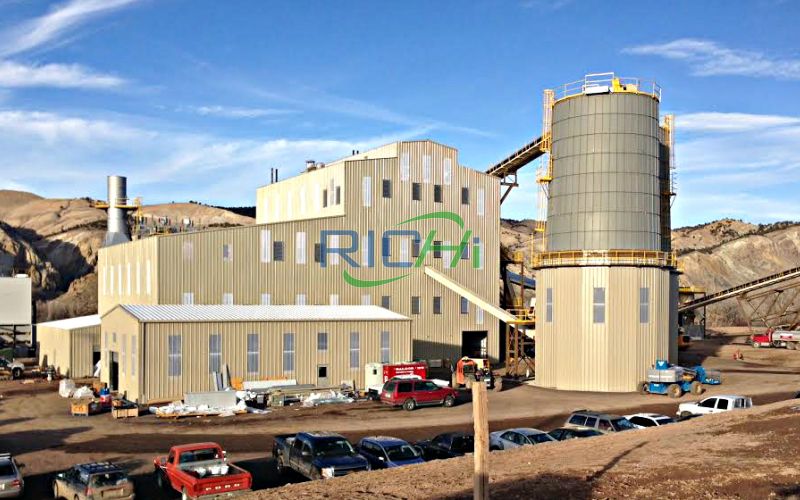
Alfalfa pellets are a kind of granular feed made from alfalfa after processing. It is rich in nutrients such as protein, minerals and vitamins, has high nutritional value, and is widely used in animal husbandry.
From the perspective of downstream applications, the application of alfalfa pellets mainly involves the feeding of herbivorous animals such as cattle, sheep, and horses, and is occasionally used in the feed of livestock and poultry such as pigs and chickens to provide rich protein and minerals. Among them, the field of dairy cattle breeding is the largest downstream application market for alfalfa pellets.
The 15-20t/h grass alfalfa pellet production line in USA project has a designed production capacity of 200,000 tons of forage pellet feed per year. The project is divided into two phases. The first phase covers an area of 35,063m2, with a planned total construction area of about 19,651m2.
New production workshops, transfer warehouses, restaurants, office buildings, scientific research buildings, and 1 guardhouse are built. Six integrated automatic production lines for forage pellet feed are set up, with an annual output of 120,000 tons of forage pellet feed. The project has 30 employees. They work 300 days a year, three shifts, and 8 hours per shift.
At present, the second phase of the project has not been built, but the customer has signed a letter of intent with us, but the process design of the second phase needs to be further determined based on the operation of the first phase.
Therefore, the following project construction content and equipment configuration, raw and auxiliary material consumption, and process design are all from the first phase project that has been built, which also produces 120,000 tons of alfalfa pellets per year.
Name:
Forage pellet production line
Country:
USA
Date:
2024.04.29
Capacity:
15-20T/H
Pellet Size:
4-10mm
The install period:
60 Days
Control Mode:
Automatic
Guiding Price:
630,000 USD
Alfalfa is known as the "Queen of Grass" and is one of the four most widely planted crops in the United States, second only to corn, wheat and soybeans. According to rough statistics, the annual output value of alfalfa hay is 8.1 billion US dollars.
The alfalfa planting area for hay production in the United States is 9.558 million hectares, with an average hay yield of 7.5 tons/hectare, and each ton of alfalfa hay is worth about 102.5 US dollars. The export of alfalfa meal and square bales earns 49.4 million US dollars each year.
The United States has 15.066 million hectares of hay production grassland mixed with alfalfa and other grasses or legumes, and the total area of hay production grassland including single-sown alfalfa is 2450.3 hectares, creating an output value of about 13.4 billion US dollars. Together with the output value of other forages, the total planting area and output value of forage grass are equivalent to the sum of wheat and soybeans.
This data is enough to show the importance of the alfalfa industry and alfalfa pellet processing industry in American agriculture. Let's introduce this large grass alfalfa feed pellet plant in United States project in detail.
The alfalfa pellet production line we designed for customers is suitable for all types of forage and straw raw materials, and can process roughage pellets suitable for all types of ruminants and livestock. The main engineering content and scale of the 15-20t/h grass alfalfa pellet production line in USA project are shown in the table below:
| Serial number | Project category | Single project name | Project content and project scale | Remarks |
| 1 | Main project | Production workshop | 1 one-story building (the main workshop is a tower building, with 6 floors above ground, one floor underground, and a height of 33m), located in the northwest of the factory, with a construction area of approximately 9632m2, a new forage pellet feed, an integrated automated production line, with the main workshop, raw material temporary storage area, finished product temporary storage area, boiler room, etc. | Newly built |
| Office building | 1 three-story building, located in the south of the factory, with a construction area of approximately 2331m2, used for staff offices | |||
| Research building | 1 2-storey building, located on the east side of the office building, with a construction area of approximately 924m2, used for product research and development and innovation | |||
| Restaurant | 1 1-storey building, located on the west side of the office building, with a construction area of approximately 704m2, used for employee dining | |||
| 2 | Auxiliary engineering | Gatekeeper 1 | 1 1-storey building, located on the west side of the south gate of the factory, with a construction area of approximately 60m2 | Newly built |
| Boiler room | Located on the northeast side of the production workshop, with a construction area of approximately 65m2 | |||
| 3 | Storage and transportation project | Transit warehouse | 1 one-story building, located on the south side of the production workshop, with a construction area of about 6000m2, used for product transfer and temporary storage | Newly built |
| Transport volume | Entrusted to local logistics companies | Meet production needs | ||
| 4 | Public works | Power supply | Local power grid | Power consumption is about 150kw·h/a |
| Water supply | Local water supply network, steam condensate is recycled, not discharged | Water consumption is 7836m³/a | ||
| Drainage | Since the municipal sewage network is not laid to this project, the domestic sewage of the project is pre-treated in the septic tank, and the concentrated water is collected and precipitated in the sedimentation tank. After being transported to the sewage treatment station in Tancheng Town, Mengcheng County by tank trucks for treatment, it is discharged into the local river. After the sewage network is laid, it will be directly connected to the municipal sewage network. | Discharge up to standard |
The specific product plan of this 15-20t/h grass alfalfa pellet production line in USA project is detailed in the table below:
| Serial number | Product name | Product solution | Specifications |
| 1 | Alfalfa pellet feed | 120000t/a | Bagged |
The preparation and quality requirements of alfalfa pellet feed for this 15-20t/h grass alfalfa pellet production line in USA project:
| Serial number | Test item | Standard value | Unit |
| 1 | Crude protein | ≥10 | % |
| 2 | Neutral detergent fiber | <60 | % |
| 3 | Crude fat | 0.7-1.8 | % |
| 4 | Calcium | ≤4.8 | % |
| 5 | Phosphorus | ≤2.6 | % |
| 6 | Nitrogen-free extract | ≤8.0 | % |
The main production equipment of this 15-20t/h grass alfalfa pellet production line in USA project is shown in the table below:
| Production unit | Production facilities | Quantity | |
| Forage pellet feed production line | Feeding | Bucket elevator | 1 |
| Cleaning | Scraper conveyor | 1 | |
| Primary screening machine | 2 | ||
| Permanent magnet cylinder | 2 | ||
| Crushing | Crushing bin | 2 | |
| Hammer crusher | 2 | ||
| Bucket elevator | 2 | ||
| Batching | Batching bin - square bin | 2 | |
| Batching bin - round bin | 2 | ||
| Batching scale | 2 | ||
| Mixing | Single-shaft ribbon mixer | 2 | |
| Elevator | 2 | ||
| Pelletizing | Pelletizing Silo - Round Silo | 2 | |
| Alfalfa Pellet Machine | 2 | ||
| Cooling | Flip Cooler | 2 | |
| Elevator | 2 | ||
| Grading Screen | Rotary Grading Screen | 2 | |
| Packaging | Finished Product Silo | 2 | |
| Belt Double Bucket Packaging Scale | 2 | ||
| Palletizing | Robot Palletizing System | 1 | |
| Public unit | Waste gas treatment facilities | Pulse bag dust collector | 3 |
| Shaklon dust collector | 3 | ||
| Cyclone dust collector | 1 | ||
| Bag dust collector | 1 | ||
| Oil fume purifier | 1 | ||
| Blower | 9 | ||
| Water treatment facilities | Pure water preparation system | 1 | |
| Steam generator | 3 | ||
| Biomass boiler | 1 | ||
The 15-20t/h grass alfalfa pellet production line in USA project plans to build a large-scale forage pellet feed line with an annual output of 120,000 tons of forage pellet feed.
Among them, the production capacity of 8 batching scales is 2.25t/h, the production capacity of 4 single-axis ribbon mixers is 4.5t/h, the production capacity of 12 pelletizers is 1.5t/h, the production capacity of 6 flap coolers is 3t/h, the production capacity of 6 rotary grading screens is 3t/h, the packaging capacity of 6 belt double-bucket packaging scales is 3t/h, and the palletizing capacity of 2 manipulator stacking systems is 9t/h.
If the working time is 24h/d and 300d/a, the production capacity of the project under full load can reach 432t per day and 129,600t per year, which can meet the production demand of 120,000 tons of forage pellet feed per year.
The main raw and auxiliary material consumption of the grass alfalfa pellet plant in United States project is detailed in the table below:
| Product | Serial number | Name of raw and auxiliary materials | Amount | Unit | Specification | Maximum storage capacity in the factory | Remarks |
| Feed | 1 | Alfalfa | 72000 | t/a | / | 5000t | Purchased |
| 2 | Corn | 27000 | t/a | / | 2000t | Outsourcing | |
| 3 | Soybean meal | 15000 | t/a | / | 1500t | Outsourcing | |
| 4 | DDGS (ingredients) | 2600 | t/a | / | 500t | Outsourcing | |
| 5 | Premix (ingredients) | 2400 | t/a | / | 500t | Purchased | |
| 6 | Other ingredients (crude protein, etc.) | 1054.6 | t/a | / | 200t | Purchased | |
| Energy | 7 | Water | 7836 | m³/a | / | / | / |
| 9 | Biomass pellets | 3049.2 | t/a | / | / | / |
| Input | Output | ||
| Item | Quantity (t/a) | Item | Quantity (t/a) |
| Alfalfa (forage) | 72000 | Feed | 120000 |
| Corn (pellets) | 27000 | Impurities | 7.2 |
| Soybean meal (pellets) | 15000 | Dust collector | 576.87 (returned to production) |
| DDGS (ingredients) | 2600 | Unqualified materials after grading screen | 12 (returned to production) |
| Premix (ingredients) | 2400 | Organized particles | 16.19 |
| Other ingredients (crude protein, etc.) | 1054.6 | Unorganized particles | 31.21 |
| Total | 120054.6 | Total | 120054.6 |
The main raw material of this customer is alfalfa hay, which does not need to be dried. And the customer already has a bale breaker. When purchasing alfalfa in bundles, the customer will first break the bales and then enter the following standard process flow.
In this 15-20t/h grass alfalfa pellet production line in USA project, the main entrance of the factory is located on the south side. From south to north, the office building, restaurant, transit warehouse, production workshop, etc. are arranged in sequence. The plane layout strives to make the production line short and straight under the premise of meeting the production process and transportation requirements.
Taking into account the production needs, fire prevention and sanitation needs, taking into account production management, convenient transportation and other factors, the layout is combined with the natural conditions such as the plant topography, geology, and meteorology, and the layout is relatively reasonable.
The sales market of American alfalfa is mainly domestic, with 2.5 million tons exported to China, the United Arab Emirates, Japan, South Korea and other countries and regions each year, accounting for only 2% of its total production.
However, the exported alfalfa mainly comes from seven Pacific West Coast states, namely California, Washington, Idawa, Utah, Oregon, Nevada and Arizona, and the exported alfalfa accounts for about 19% of the total production of the seven states.
From the perspective of the American alfalfa market structure, the alfalfa industry is the basic industry of the American herbivorous livestock breeding industry, and the hay industry supports the healthy and safe animal husbandry in the United States. The export of alfalfa is only a small agricultural product subject, which has little impact on the American alfalfa industry.
In addition to self-use, the alfalfa pellets processed by this project are also sold in the United States and not exported.
The global alfalfa pellet market shows a steady growth trend. Affected by global climate change and the reduction of available agricultural land, the demand for alfalfa, as a cold-resistant, drought-resistant, adaptable and easy-to-grow feed crop, continues to rise.
According to authoritative data statistics, in 2023, the total sales volume of alfalfa pellets in the world will reach about 17.841 million tons, and the total market revenue will be about US$5.178 billion.
In the next few years, with the growth of the global middle-class population and the acceleration of urbanization, people's demand for animal protein will continue to increase, which will further promote the development of the alfalfa pellet market.
At the same time, with the continuous advancement of science and technology, the cultivation technology of alfalfa will be further improved, thereby increasing yield and quality to meet market demand. It is estimated that by 2025, the global alfalfa pellet market revenue will increase to US$5.303 billion.
Judging from the development of various regions, the North American and European markets are relatively mature and demand is stable. Research shows that North America is the largest consumer market for alfalfa pellets in the world, with sales of approximately 10.355 million tons in 2023, accounting for approximately 57.11% of the global total sales.
In addition, the alfalfa pellet market in the Asia-Pacific region is growing rapidly, mainly due to the rapid development of animal husbandry in the region, a large population and high demand.
Green and environmental protection: With the increase in global environmental awareness, green and environmental protection has become an important trend in the alfalfa pellet market.
Planting alfalfa can reduce the use of fertilizers and pesticides and reduce environmental pollution. Therefore, many countries are actively promoting alfalfa planting to achieve green development of agriculture.
With the advancement of science and technology, intelligent planting technology has gradually been applied to the planting of alfalfa. Through intelligent control, precise regulation of environmental factors such as temperature, humidity, and light can be achieved to improve the yield and quality of alfalfa. In the future, intelligent planting will become an important development direction of the alfalfa industry.
The prospect of establishing a grass alfalfa pellet production line in USA and developing an alfalfa pellet processing business is obvious. Whether you want to develop a large-scale alfalfa pellet processing business or a small-scale alfalfa pellet processing business, or your raw materials are other forage grasses or straw raw materials, RICHI MACHINERY can handle it.
We can undertake the construction of alfalfa pellet production line projects with an output of more than 0.6 tons per hour, and have established alfalfa pellet production line projects in more than 50 countries around the world, and have undertaken various grass pellet and straw pellet production line projects in more than 80 countries.
No matter what your raw material is, our experience and expertise are sufficient to support the construction of all types of pellet projects. Contact RICHI MACHINERY at any time to get a customized pellet production line solution and a full set of equipment quotes!
Having the right mix of reliable, high-quality pellet machine and pelletizing systems and expert support is essential to your success. Watch how our end-to-end feed pellet plant solutions have helped our customers optimize their performance.
Our customized and future-proofed turnkey pellet plant solutions is designed with you at the core. From vision to reality and beyond, our team stays connected with yours. Giving you peace-of-mind with an expert at your side.
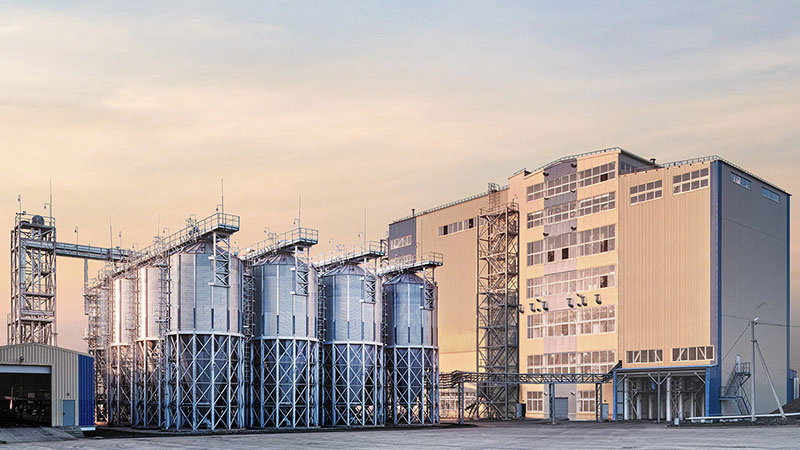
At RICHI, we go beyond project completion. With RICHI Servicee, we’re your dedicated partners in success. Count on us for expert guidance, minimal downtime, and optimized productivity. Choose RICHI for unmatched service and support.
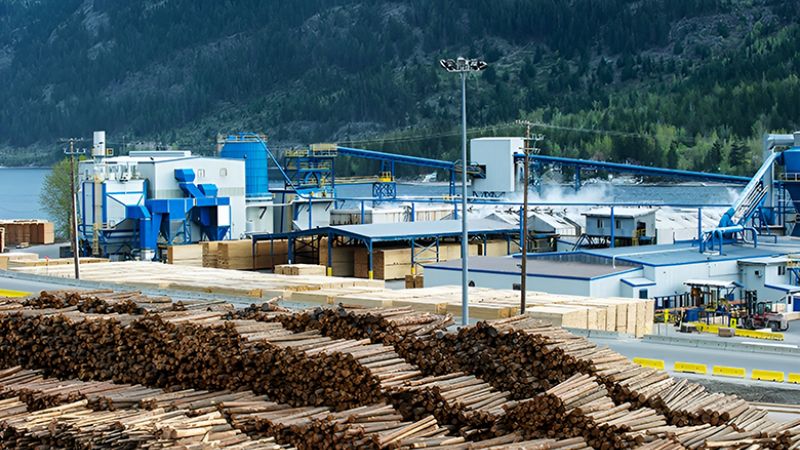
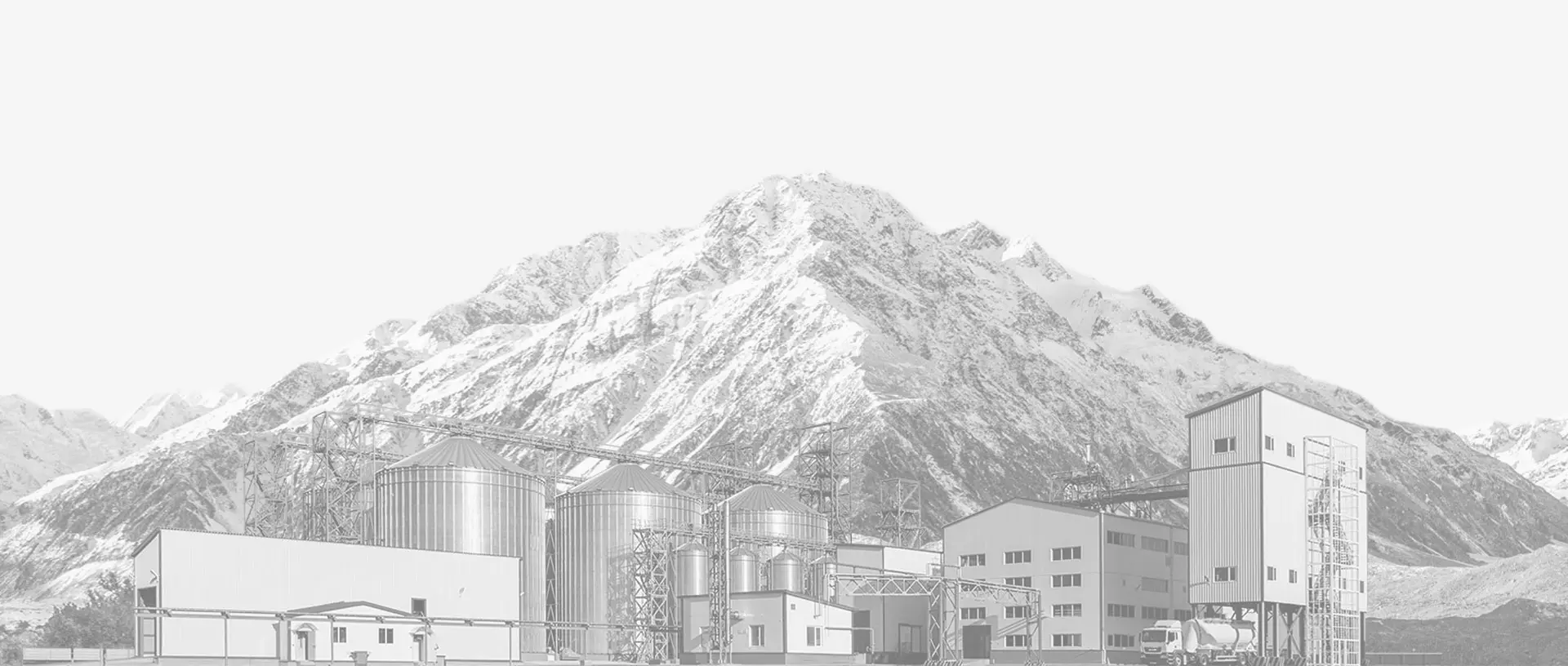

Meet global product demands and quality standards with industry-leading pellet plant design, engineering, equipment, and construction services for pellet processors.
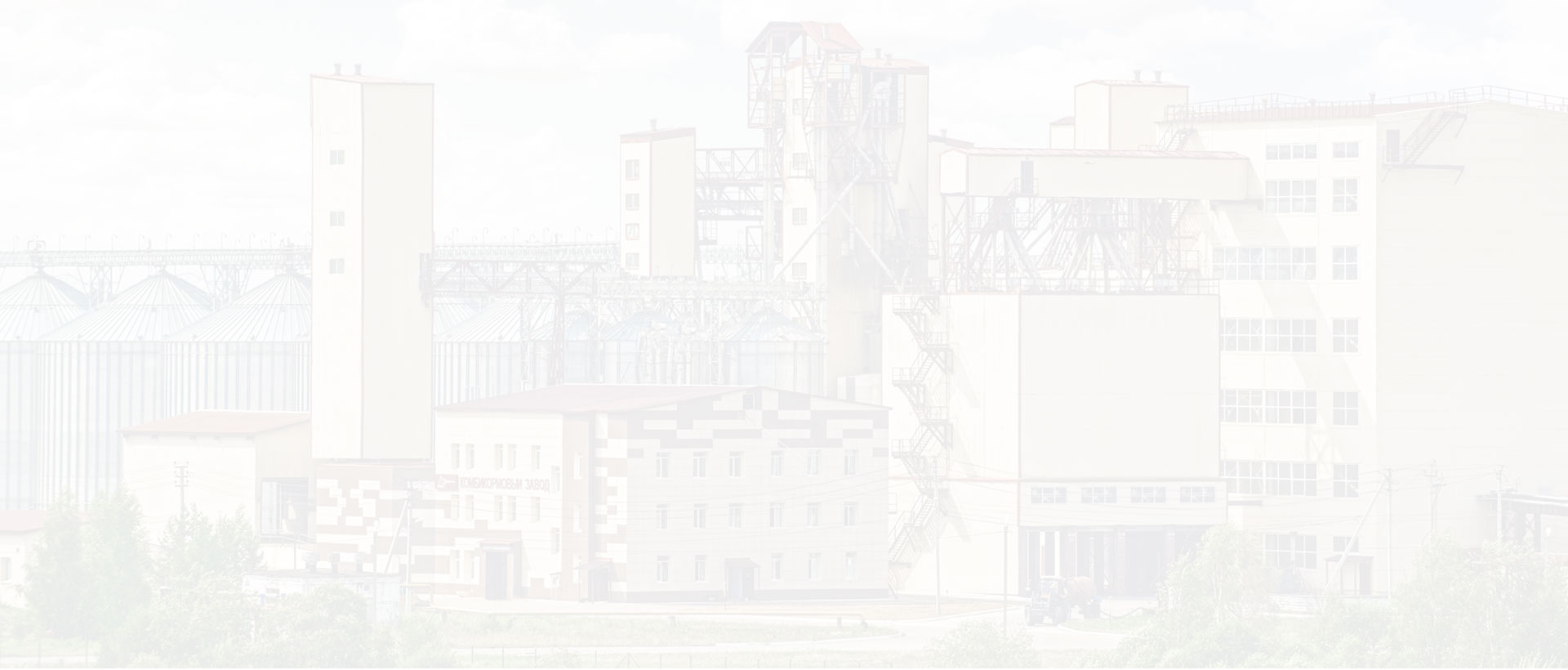

Your Partner Beyond Project Completion
2000+ cases
RICHI is the leading designer, manufacturer and builder of pellet plants in the world, completing over 2000 projects in 140 countries across 6 continents.
Read More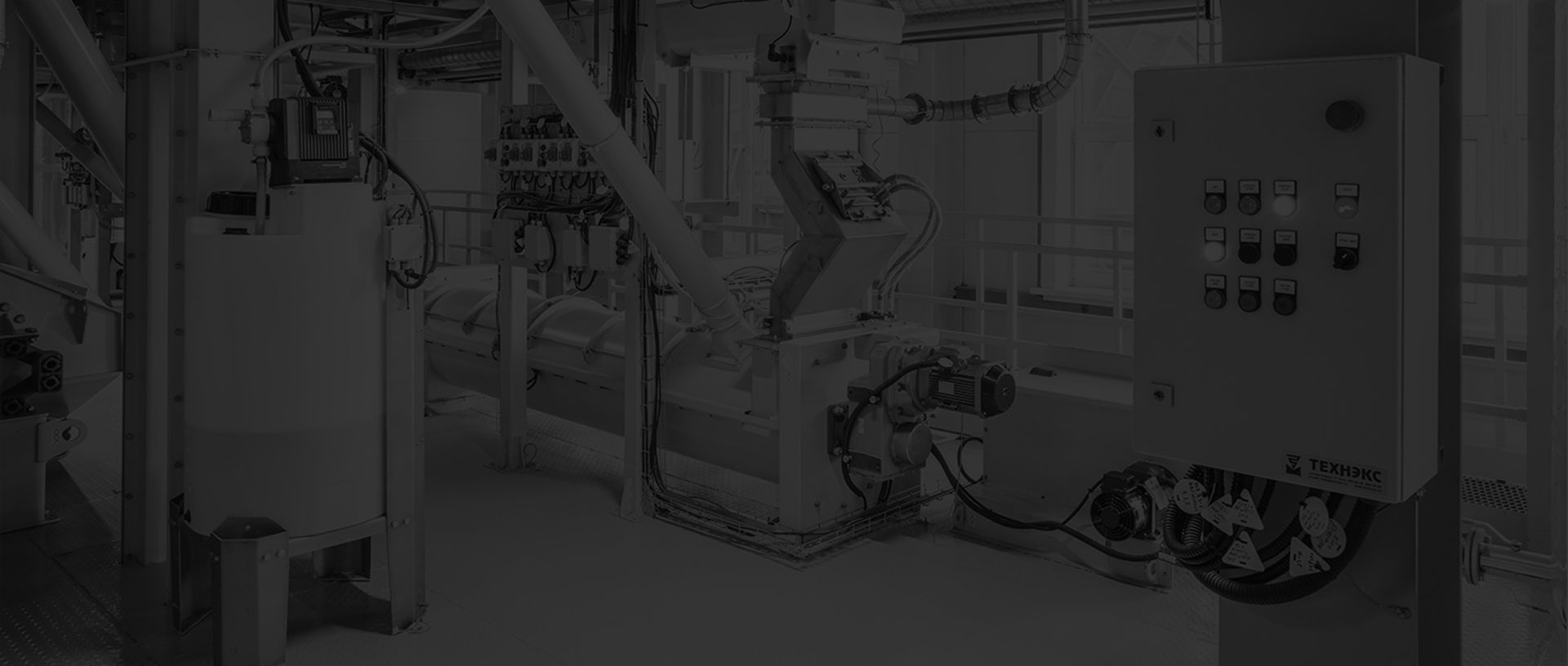
Increase plant productivity, profitability, and safety by integrating high quality equipment into your pellet production line. Over the years, RICHI has become China's top pellet equipment manufacturer. At the same time, RICHI has established valuable partnerships with the world's leading component and raw material manufacturers to bring you the best there is in technology, automation, and efficiency in pelleting plant machinery.

For nearly 30 years, RICHI has been providing best-in-class pellet plant equipment and services to clients across a variety of industries, sizes, and needs. We pride ourselves on the knowledge and skill that each team member possesses – from our technical sales team to our process design engineers. You can count on RICHI Machinery to take your operation to the next level of innovation, quality, and success.
Need help with your pellet manufacturing plant project? Contact us today.
ANIMAL FEED
BIOMASS
WOOD
ORGANIC FERTILIZER
AQUA FEED
CAT LITTER
MUNICIPAL WASTE RECYCLING
SPECIAL PELLET PRODUCTION
RICHI Machinery continues to deliver world class pellet mill equipment, pellet plant engineering and project solutions that add value to our customers in the animal feed, wood waste, agriculture waste, organic fertilizer, cat litter and special pellet products industries. Throughout the years, we RICHI Machinery have built strong brand, becoming industry-leading pellet machine manufacturer. We value integrity, promise quality, and prioritize your success.
Learn MoreWith our expert team, we precisely implement your process engineering requirements in pellet mill and pelletizing plant systems. No matter which industry you’re in – we understand your needs and deliver solutions that meet the highest standards.
At RICHI, quality comes first. Our pellet making machine and related pellet line equipment undergo rigorous quality controls to ensure they meet the highest standards. Rely on products that are durable, safe, and efficient.
With decades of experience in pellet machine and pellet production line production, we have earned a reputation as a trusted partner in various industries. Our expertise allows us to cover a wide range of applications.
Not only do we offer premium pelleting equipment, but we are also experts at designing, building, installing, and maintaining facilities from the ground up. Our expertise is within pellt plant process design, discovering the most efficient, productive, and profitable way to handle your materials in an end-to-end cycle.

Keeping in touch with us is an effective way to solve all your problems. If you have any needs or questions, please leave your contact information, then RICHI technical consultants will send design, quotation, videos to your mailbox. You can also contact us directly via WhatsApp: +86 13838389622
Copyright©2015-2024 by HENAN RICHI MACHINERY CO., LTD. All rights reserved.